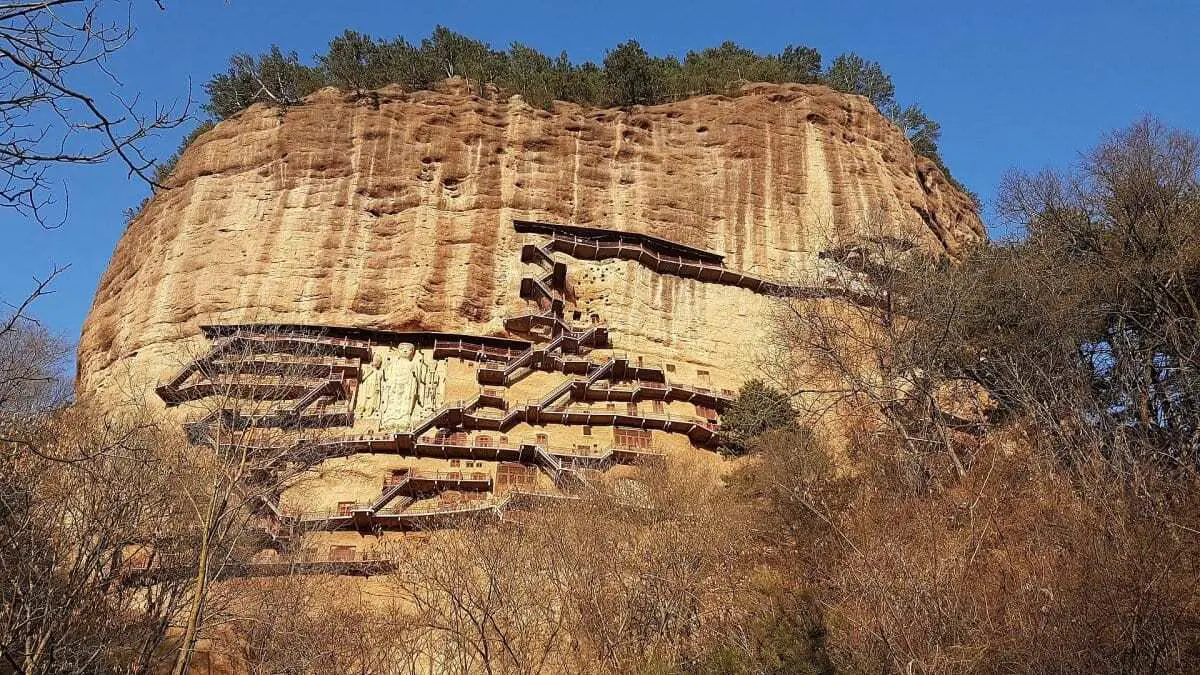The Maijishan Grottoes is an elaborate range of rock-cut ceremonial chambers, containing over 7200 Buddhist sculptures and 100 square metres of murals in Tianshui, northwest China.
They were first constructed in the Later Qin era (a state of Qiang ethnicity of the Sixteen Kingdoms) around AD 384–417.
The grottoes are carved into the soft red sandstone cliff of a hill, named Maijishan (translated as wheat stack mountain) which rises 142 metres over the Xiaolongshan forest on the northern side of the Qinling Mountain Range.

The sculptures and murals represent the phased development of Chinese sculpture and architecture. The earliest examples demonstrate an influence of Indian design, with later Central Asian and later native Chinese styles becoming more prominent. All designs are dedicated to the pursuit of Buddhism, from the depictions of the birth of Siddhārtha Gautama to the bodhisattvas on their path towards Buddhahood.
The most active period of construction occurred during the reign of Northern Wei (AD 385 – 534), Western Wei (AD 535 – 556), and the Northern Zhou (557 – 581 AD) dynasties. Maijishan would see continued alterations and additions up until the Qing dynasty (AD 1644 – 1911).

Maijishan’s also has a semi-mythical beginning. Sometime from AD402 two eminent monks called T’an-Hung and Xuangao established a monastic community numbering 300 disciples, as recorded in “The Biographies of Eminent Monks of the Liang Dynasty – Liang Gao Seng Zhuan.”
T’an-Hung later travelled south to Cochin China and committed suicide by self-immolation. This act was recorded from a morbid passage in a poem – “saw Hung with a golden body, riding very swiftly westward on a golden deer.” What happened to the monastic community is speculation, it may have been suppressed in the year 444, however, there is no archaeological evidence to suggest the community even existed.
Header Image Credit : Anagoria – CC BY 3.0





